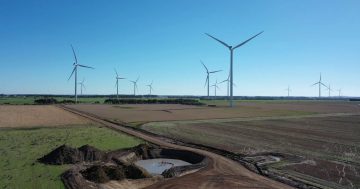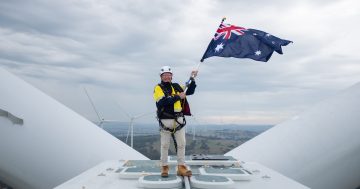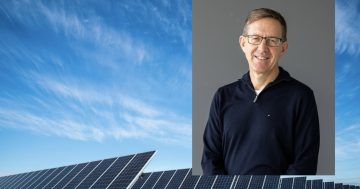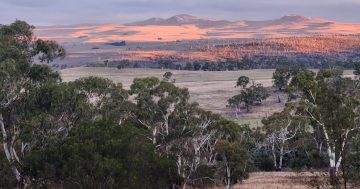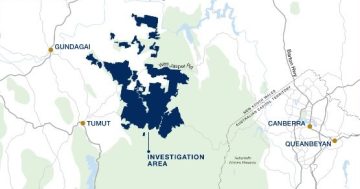
Minister for Climate Change and Sustainability Shane Rattenbury with local landowners at the site of one of the massive turbines at Crookwell 2 wind farm.
Construction has started on the foundations for 28 turbines at the Crookwell 2 wind farm which will collectively be able to power about 41,600 Canberra homes – or around one-quarter of Canberra households.
Standing 160 metres tall and 130 metres wide, the turbines will cost $125 million and produce around 304,000-megawatt hours of power per year.
Minister for Climate Change and Sustainability Shane Rattenbury toured the site and inspected the foundation work for one of the massive turbines this morning, saying that the project benefits from advances in renewables technology.
Mr Rattenbury said that each of the farm’s 28 turbines will produce more power than all eight of the wind farm turbines combined at the Crookwell 1 wind farm which was completed in 1998.
“Clean energy is the industry of the future, and we’re proud that the ACT has some of the world’s most progressive renewable energy and climate change targets,” Mr Rattenbury said.
“Once all four wind farms are complete, the ACT will have achieved its target of sourcing 100 per cent of our electricity from renewable sources.”

The site of one of the massive turbines at Crookwell.
The Crookwell 2 wind farm was a successful project in the 2016 Next Generation renewables auction and is estimated to be completed in September next year.
It will then begin generation, along with two other ACT feed-in-tariff supported wind farms, Sapphire and Hornsdale Stage 2. Stage 3 of the Hornsdale wind farm will begin generation in 2019.
The Crookwell 2 wind farm is being developed by Global Power Generation Australia (formerly Union Fenosa Australia), which moved its Asia-Pacific office to Canberra in May this year.
“This only reaffirms Canberra’s reputation as a growing hub for renewable energy projects,” Mr Rattenbury said.
“Already there is around 2000 MW of renewable energy assets under management from Canberra, which is equivalent to nearly half of all the non-hydro renewable energy assets operating in Australia.”
Supported by ACT large feed-in tariffs, the Crookwell 2 wind farm is the last successful reverse auction project to commence construction. It is located 30 kilometres north-west of Goulburn.












